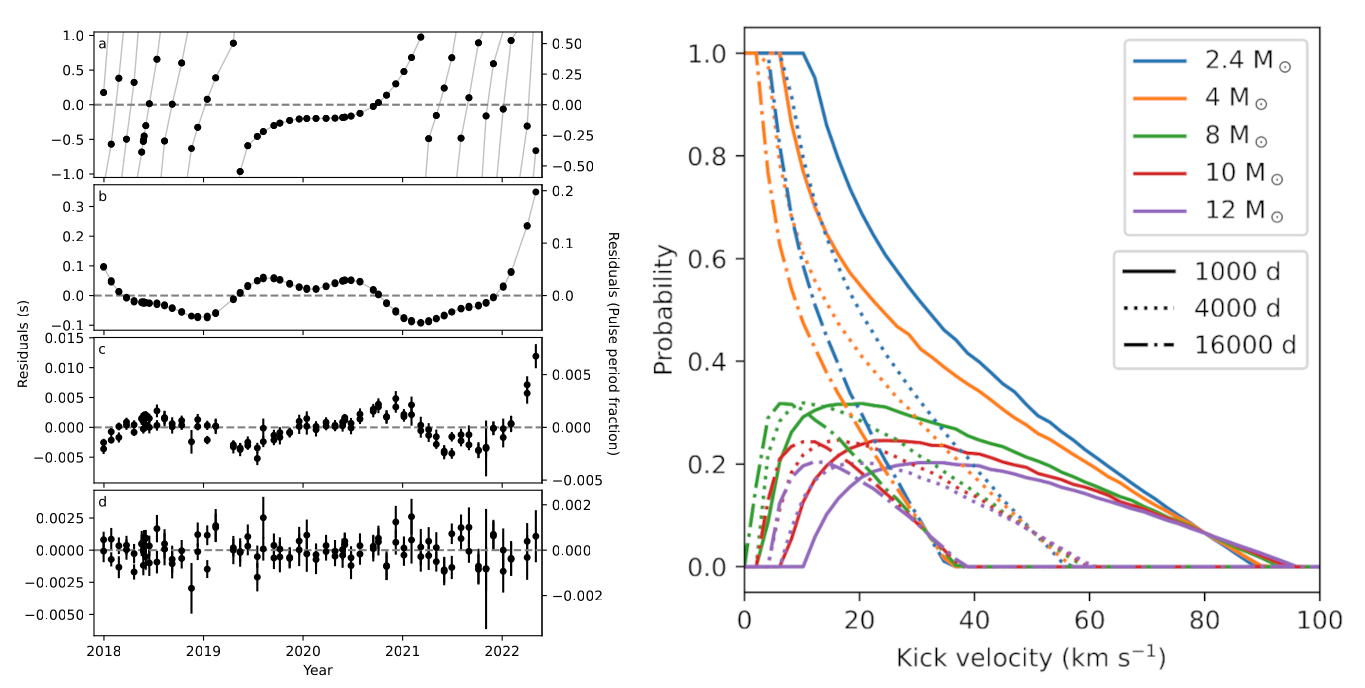Daily Image
11-12-2023PSR J0210+5845; An ultra wide binary pulsar with a B6V main-sequence star companion
| Submitter: | Emma van der Wateren |
| Description: | PSR J0210+5845 is a ~1.8-s pulsar that was discovered as part of the LOFAR Tied-Array All-Sky Survey. Timing observations revealed large deviations from typical pulsar spin-down behaviour. In a new paper, we timed the pulsar while sequentially adding higher-order spin frequency derivatives to improve the timing ephemeris. The left panel shows the timing residuals from timing with one (a), two (b) three (c), and four (d) spin frequency derivatives. We interpreted the deviations as being due to binary motion and, using the higher-order spin frequency derivatives, constrained the orbital parameters. We found that J0210+5845 is in an ultra wide and moderately eccentric orbit with an orbital period between 33 to 87 years, making it one of the widest pulsar binary systems known. The companion star is a V=13.5 main sequence star with a mass of ~3.6 solar mass. With these properties, the system becomes the seventh known system of a sub-population of so-called high-mass binary pulsars (non-recycled pulsars (P > 0.01 s) with main-sequence binary companions with masses over 1 solar mass). Within this subpopulation, PSR J0210+5854 stands out as it has the lowest mass companion, which poses a challenge to the survival of the binary system due to the supernova explosion that formed the neutron star. The progenitor of the pulsar must have had a mass exceeding 8 solar mass to form a neutron star with a canonical mass of 1.4 solar mass. With a 3.6 solar mass companion star, over 50% of the mass is lost in a supernova explosion, a scenario that typically leads to the disruption of the binary system. We simulated supernova kicks with a range of kick velocities and with different neutron star progenitor masses and pre-supernova orbital periods and we calculated the probability for the binary system to remain bound after the supernova (right panel). We found that, for the binary system to remain bound, a low-velocity, retrograde natal kick is required with a maximum velocity of 96 km/s. |
| Copyright: | E. van der Wateren, C. G. Bassa, G. H. Janssen, I. V. Yanes-Rizo, J. Casares, G. Nelemans, B. W. Stappers, and C. M. Tan |
| Tweet |  |
